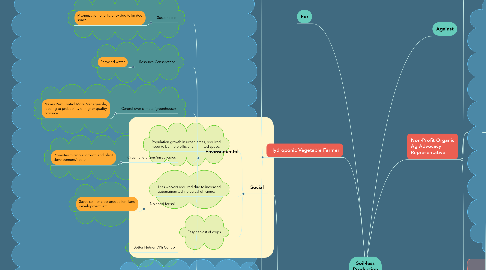
1. Hydroponic Vegetable Farmer
1.1. Social
1.1.1. Soil-less systems have to fit under USDA organic regulations, which they currently do not.
1.1.2. Workers/worker pay
1.1.3. Must meet all regulations/requirements
1.1.4. Saves time and labor
1.2. Environmental
1.2.1. Sustainable
1.2.1.1. Maximization of efficiency due to limited space
1.2.2. Resource Conservation
1.2.2.1. Recycled water
1.2.3. Control over climate (greenhouse)
1.2.3.1. Makes Pest Control More Manageable, leading to probability of higher-quality produce.
1.2.4. Organic fertilizers/insecticides
1.2.4.1. Promotes microbial growth and plant development/health
1.2.5. No need for soil
1.2.5.1. Saves soil for crop production, land development, etc.
1.2.6. Better Nutrient/Ph Control
1.2.7. No Weeds
1.3. Economic
1.3.1. Fast/Efficient production of produce
1.3.1.1. Option to grow food anywhere
1.3.2. Faster production = more money
1.3.3. Marketing of hydroponic crops as organic
1.3.4. Less money spent on water, labor other resources due to efficiency
2. Urban Ag Non-Profit Representative
2.1. Social
2.1.1. Population growth in urban areas, required need to be more efficient in limited space.
2.1.2. Less workers required due to increased automation/technological efficiency
2.1.3. Easy harvest of crops
2.2. Environmental
2.2.1. Sustainable
2.2.2. Resource conservation
2.2.3. Control over climate (greenhouse)
2.2.4. Less usage of fossil fuels
2.3. Economic
2.3.1. Food can be grown year-round, leading to more output
2.3.2. Urban Friendly
2.3.2.1. Less space needed to grow
2.3.3. Cost-efficient systems
2.3.4. Less shipping costs in urban hydroponics systems if grown locally
3. For
4. Non-Profit Organic Ag Advocacy Representative
4.1. Social
4.1.1. Soil-less systems require high levels of expertise and frequent monitoring to ensure nothing goes wrong
4.1.2. Less workers are needed, which could lead to decrease in organic jobs
4.2. Environmental
4.2.1. Hydroponics use more chemical methods to control plant development.
4.2.2. Less usage of soil, where many nutrients are already present.
4.2.3. If a disease or pest gets into a hydroponic system, and can lead to 100% plant failure. Where with soil systems, the soil can act as a buffer at times for diseases/insects.
4.2.4. Diseases can travel through nutrient/water systems
4.2.5. Bacteria and fungi are able to grow in standing water
4.3. Economic
4.3.1. Hydroponics can lead to higher electrical costs due to systems being run completely indoors/in greenhouses.
4.3.2. High start-up costs for soil-less systems
4.3.3. Power outage could lead to crop failure if there are no back-up generators
5. Certified Organic Diversified Vegetable Farmer
5.1. Social
5.1.1. Decrease in wokers
5.1.2. More jobs could go to hydroponics workers
5.1.3. More labor intensive for farmers, but the lack of automation keeps their jobs
5.2. Environmental
5.2.1. Soil systems improve soil fertility and health
5.2.2. No GMO crops in organic farming
5.2.3. Organic farming in soils is climate/ecological friendly
5.2.4. Soil stays healthy, organic crops in soil can attract pollinators, where as most soil-less systems do not because they are indoors.
5.3. Economic
5.3.1. Decrease in crop value if hydroponics are included under USDA
5.3.2. Forced to make marketing changes
5.3.3. Increased competition with hydroponic vegetable farmers
5.3.4. Lower start up costs compared to hydroponics

